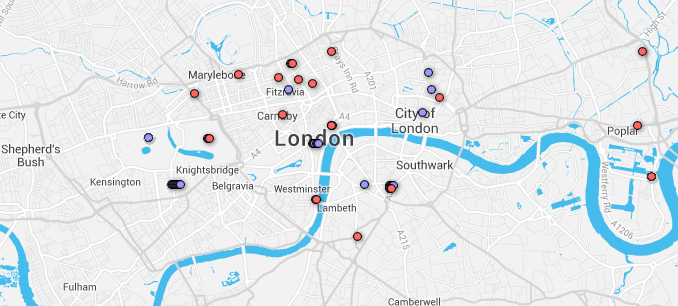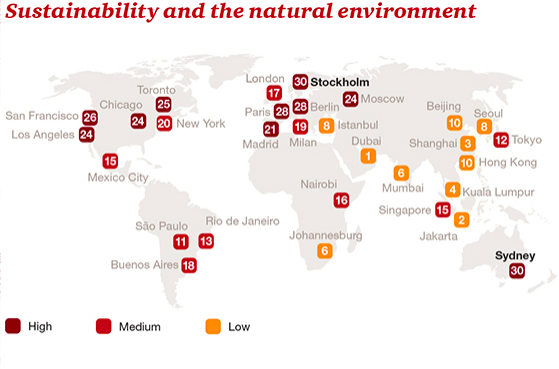Site search:
-
What’s new?
Energy for London Tags
Brent Buildings Camden Carbon Emissions CHP Cities Climate Adaptation Community Heating Community Initiatives Croydon Data DECC Decentralised Energy Distribution ECO Energy Costs Energy Efficiency Enfield FIT Fuel Poverty Funding Green Deal Hackney Haringey Housing Islington Lambeth Library Local Authorities Mayor Newham Ofgem Olympics Photovoltaics Planning RE:FIT RE:NEW Renewable Energy Retrofit Southwark Tower Hamlets Transport Waltham Forest Waste WestminsterEnergy Archives:
- February 2021 (1)
- January 2021 (15)
- December 2020 (15)
- November 2020 (9)
- October 2020 (3)
- August 2020 (5)
- July 2020 (3)
- June 2020 (4)
- April 2020 (10)
- March 2020 (5)
- February 2020 (2)
- January 2020 (3)
- October 2019 (1)
- September 2019 (4)
- August 2019 (2)
- July 2019 (1)
- August 2018 (1)
- November 2016 (8)
- October 2016 (8)
- September 2016 (2)
- August 2016 (8)
- July 2016 (14)
- April 2016 (12)
- March 2016 (16)
- February 2016 (8)
- January 2016 (4)
- December 2015 (1)
- November 2015 (1)
- October 2015 (16)
- September 2015 (3)
- June 2015 (1)
- May 2015 (1)
- April 2015 (1)
- March 2015 (1)
- February 2015 (1)
- January 2015 (1)
- December 2014 (18)
- November 2014 (4)
- August 2014 (8)
- July 2014 (7)
- June 2014 (25)
- May 2014 (8)
- April 2014 (4)
- March 2014 (12)
- February 2014 (7)
- January 2014 (13)
- December 2013 (11)
- November 2013 (15)
- October 2013 (15)
- September 2013 (18)
- August 2013 (5)
- July 2013 (20)
- June 2013 (33)
- May 2013 (8)
- April 2013 (16)
- March 2013 (25)
- February 2013 (14)
- January 2013 (20)
- December 2012 (23)
- November 2012 (23)
- October 2012 (25)
- September 2012 (14)
- July 2012 (12)
- June 2012 (43)
- May 2012 (20)
- April 2012 (8)
- March 2012 (40)
- February 2012 (39)
- January 2012 (40)
- December 2011 (22)
- November 2011 (40)
- October 2011 (33)
- September 2011 (48)
- August 2011 (40)
- July 2011 (58)
- June 2011 (41)
- May 2011 (80)
- April 2011 (38)
- March 2011 (33)
- February 2011 (25)
- January 2011 (24)
- December 2010 (3)
- November 2010 (7)
- October 2010 (6)
- September 2010 (7)
- August 2010 (1)
- July 2010 (2)
- June 2010 (4)
- May 2010 (1)
- March 2010 (3)
- February 2010 (3)
- December 2009 (5)
- November 2009 (2)
- October 2009 (3)
- July 2009 (3)
- June 2009 (1)
- April 2009 (1)
- March 2009 (1)
- February 2009 (1)
- January 2009 (1)
- December 2008 (2)
- October 2008 (1)
- September 2008 (1)
- July 2008 (1)
- March 2008 (2)
- January 2008 (2)
- October 2007 (1)
- September 2007 (3)
- July 2007 (1)
- March 2007 (1)
- February 2007 (3)
- November 2006 (3)
- August 2006 (1)
- February 2006 (1)
- May 2005 (1)
- February 2004 (1)
Author Archives: Admin
Urban Infrastructure Initiative
May 2014: The outcomes of the WBCSD Urban Infrastructure Initiative (UII) suggest that all cities seeking to realize their sustainability objectives can benefit from engaging with business early in the planning and strategy development process. Early engagement leverages the capability of business to identify innovative and cost-effective solutions to complex, cross-cutting urban sustainability challenges. This final report summarizes the work done in these cities and highlights the lessons learned and potential applications where the early collaborative engagement with business should be considered by cities.
Posted in Library
Leave a comment
London Smart Grid Projects
May 2014: A new study on smart grid projects being undertaken across the EU also provides an excellent Smart Grids Project Map, and highlights a number of projects going forward in London.
 Brief details are provided on 30 smart grid projects in the capital including:
Brief details are provided on 30 smart grid projects in the capital including:
Barts links energy saving to patient care and saves £105,000 in first year
May 2014: Guardian article on how St Bartholomew’s (Barts) and the Royal London Hospital in London wanted to cut a £12m annual energy bill. “The trust involved three external partners: behavioural change experts Global Action Plan, technology pioneers GE and facilities management specialists Skanska. Each has sustainability at the heart of its rationale and they set about involving employees in two of the trust’s six hospitals in behavioural changes. By concentrating less on the energy message and more on the provision of care, the campaign won the support of staff and saved more than £100,000 and the equivalent of 800 tonnes of CO2 in its first year.“
Further details are set out on Global Action Plan’s website here and here.
Retrofit London project announced
May 2014: News that the Greater London Authority has approved funding, through the European Development Regeneration Fund (ERDF) to award “£525,000 to LB Enfield for the Retrofit London project, to deliver business support to Small and Medium Enterprises in London”.
The approval document sets out that “The ‘Retrofit London’ project is led by LB Enfield, working in partnership with LB Haringey, LB Waltham Forest, LB Lewisham, Enterprise Enfield (EE) and North London Chamber of Commerce (NLCofC).
Retrofit London aims to support 175 SMEs based in Enfield, Haringey, Waltham Forest and Lewisham, to access new market opportunities, particularly market opportunities driven by the carbon reduction and energy saving agenda.“
The approval document also provides some background to the ERDF and sets out that the total project cost is £1.05m as a result of match funding from the partners involved:
LB Enfield (Procurement team): £42,000
Enfield Council: £130,405
LB Haringey: £100,000
LB Lewisham: £75,000
LB Waltham Forest (Procurement team):£42,000
LB Waltham Forest (Economic Development team): £38,000
North London Chamber of Commerce: £47,595
Enterprise Enfield: £50,000
A tender was issued for a Project Manager for the programme, the deadline for which was earlier this week. The project is to set to run until December 2015.
Posted in Energy Efficiency, News
Tagged Enfield, Green Growth, Haringey, Lewisham, SMEs, Waltham Forest
1 Comment
Rethinking Green Infrastructure
May 2014: A new Arup study Cities Alive – rethinking green infrastructure – “shows how the creation of a linked ‘city ecosystem’ that encompasses parks and open spaces; urban trees, streets, squares; woodland and waterways can help create healthier, safer and more prosperous cities. To realise this vision, green infrastructure has to now take a more influential role in the planning and design of cities and urban environments.”
A number of London green infrastructure initiatives are touched on including:
- The new Queen Elizabeth Olympic Park; which forms part of,
- Plans for an All London Green Grid
- The High Line for London competition which encouraged ideas for new green infrastructure in London
- The New London Landscape project
- The Mayor of London’s 100 Pocket Parks project (further details on GLA press release and on the Project Dirt website
- the Bankside Urban Forest
- The Greater London i-Tree project led by the Forestry Commission and the Greater London Authority, to be launched in 2014, undertakng an assessment of London’s urban forests.
The report also looks at how green infrastructure can help cities adapt to increasing temperatures as a result of climate change. All in all an interesting read!
Cities of Opportunity
May 2014: A new PWC study “analyzes the trajectory of 30 cities, all capitals of finance, commerce, and culture—and, through their current performance, seeks to open a window on what makes cities function best”. Looking at the ‘Sustainability and natural environment‘ criteria – London came around midway.
Page 42 of the report provides some detail behind this sustainability criteira and the ranking of the cities, with London scoring 79 points – and Stockholm coming first with a total score of 121 points – against categories surveyed which included ‘thermal comfort’, ‘recycled waste’, ‘air pollution’, ‘public park waste’ and …’natural disaster risk’.
The study also reports that across all sectors surveyed, which include areas such as innovation, technology, and transportation and infrastructure, London has the highest overall score by “a good margin”.. which is nice!
“inner-city areas are often the most heat-energy efficient”
21 May 2014: “New research shows that the compact, taller buildings typical of inner-city areas are often the most heat-energy efficient – research by LSE Cities at the London School of Economics and the European Institute for Energy Research looked specifically at the role building design can play at the impact of the basic configurations of residential buildings (“urban morphology”) on energy demand. This impact is a result of two principal determinants of the thermal performance of buildings: the level of exposure to sunlight, which allows buildings to absorb passive solar heat; and the relative amount of external walls, which lead to heat losses” – read full Guardian article here.
Posted in Energy Efficiency, News
Tagged Buildings, Cities, Energy Efficiency, Heat Maps
Leave a comment
Heatwave Plan for England
14 May 2014: A new Heatwave Plan for England has been published today by the Public Health England. With respect to London, the Plan mentions:
- Extreme temperatures on the London Underground network could lead to a range of health and safety challenges.London Underground network operations monitor Met Office weather forecasts, and if temperatures are forecast not to fall below 24°C for three days running they will get ready to implement plans to deploy hot weather notices and bottled water supply, as well as measures to prevent track buckling.
- On a critical issue for London which is air pollution, the Plan states that – smogs typically accompany heatwaves as these often occur during periods of limited dispersion and /or easterly continental air masses arriving in the UK. As a result pollutants are less well spread or added to a higher background concentration which can lead to high concentrations of nitrogen dioxide and particulate matter. Heatwave conditions often lead to increased ozone levels following interactions of other pollutants with sunlight.
The Heatwave Plan also mentions a number factors which are likely to put increasing pressure on the supply of electricity – something which is likely to become more important as climate change impacts grow:
- At a time when energy companies traditionally maintain power stations for the winter by standing units down over the summer, rising temperatures increase the demand for supply due to the use of air-conditioning units and reduce the power-carrying capacity of the system, as it is harder to cool conductors – this will restrict the ‘maintenance window’ available and could ultimately require greater redundancy on the system to permit maintenance.
- Rising temperatures cause cooling problems for power stations as they are unable to cool components. This effect has been experienced in France, but not yet to a serious extent in the UK.
- High air temperatures are more of a problem and nuclear reactors can trip out at above 40°C, although this has never yet been reached at any site (38°C being the record).
- Rising temperatures lower power station efficiency. This effect is of lower concern than the two effects above.
Decentralised Energy Delivery: the Business Case
April 2014: On Wednesday 2nd April 2014 the Greater London Authority hosted a workshop focussing on the Business Case and Business Planning for Decentralised Energy projects. The event included an introduction from Matthew Pencharz – Senior Advisor, Environment and Energy (GLA), case studies and an open discussion amongst all attendees. The workshop hosted speakers from the London Borough of Enfield, Westminster City Council, Arup and the GLA. Attendees included energy consultants, engineers and local authorities.
Materials presented by the speakers can be downloaded using the following links:
Peter North, Greater London Authority
Robert Tudway Greater London Authority
Bruce Laidlaw, Arup
Jeff Laidler, London Borough of Enfield
Tim Starley-Grainger, Westminster City Council
Posted in Decentralised Energy, News
Tagged CHP, Community Heating, Enfield, Haringey, Westminster
Leave a comment
One million Londoners don’t open their energy bills
4 April 2014: Evening Standard report results of a survey commissioned by what appears to be a new collective switching business ThisIsTheBigDeal.com. Results not published on the company’s website, and the numbers of people surveyed not revealed, but the story sets out that “almost a million Londoners do not bother to open their gas and power bills despite being worried about the cost, a damning survey revealed today”. Likely a 1,000 or so people surveyed, so some heroic extrapolation going on here – but issues raised such as consumers getting confused by their bills, and not even attempting to review their energy costs have been similarly identified in earlier studies. It’s not clear from the story if Londoners are better or worse than consumers in other regions.
DECC interestingly undertake a regular ‘Public Attitudes Tracker‘. The February 2014 release says the following (p4):
- 47% of people were very or fairly worried about paying their energy bills, similar to September 2013 (48%). In December 2012 50% of people were very or fairly worried about paying their energy bills, compared with 45% in September 2012.
- 32% of people said they will or may switch energy supplier in the next 12 months, unchanged since September 2013 (34%) and December 2012 (35%).
- Four in ten (42%) of people trusted their energy supplier to inform them of the best tariff for them, similar to March 2013 (46%) and March 2012 (44%), when the question was first asked.
- Half of people (49%) said they trusted their supplier to provide impartial and accurate advice on energy efficiency measures, similar to March 2013 (51%) and March 2012 (53%), when the question was first asked.
Nothing however on whether consumers understand their energy bill.
PV storage trialled in Hackney
5 April 2014: The latest Feed in Tariff (FITs) statistics continues to show London’s abysmal progress on installing photovoltaic projects (see story here) – but at least today’s Department of Energy and Climate Change (DECC) Solar Strategy (PII) highlights that there is some innovative stuff going on with PV in the capital. Not surprisingly the ground-breaking Arcola Theatre is involved (the theatre company with a fuel cell business at the side…) – see case study from strategy copied below.




